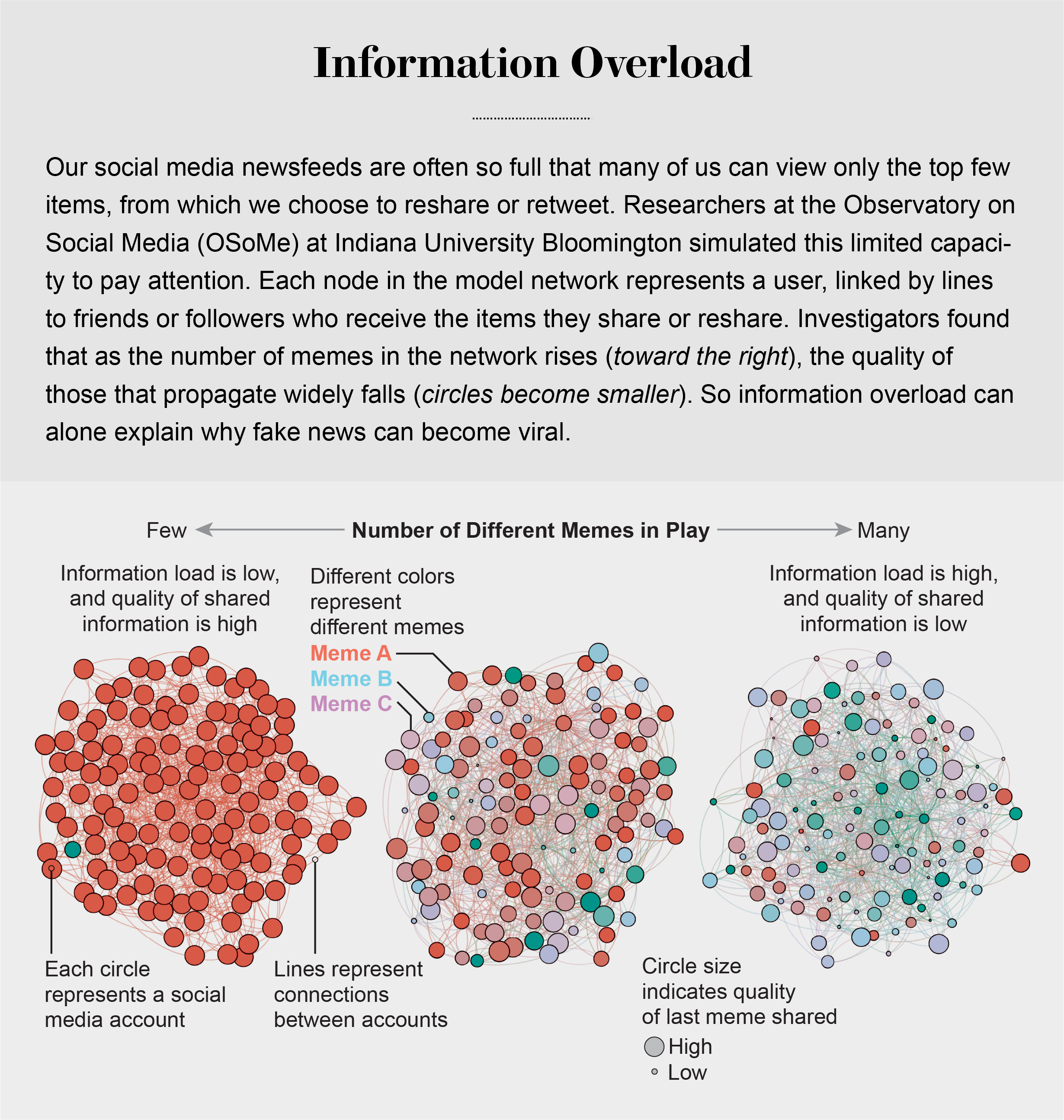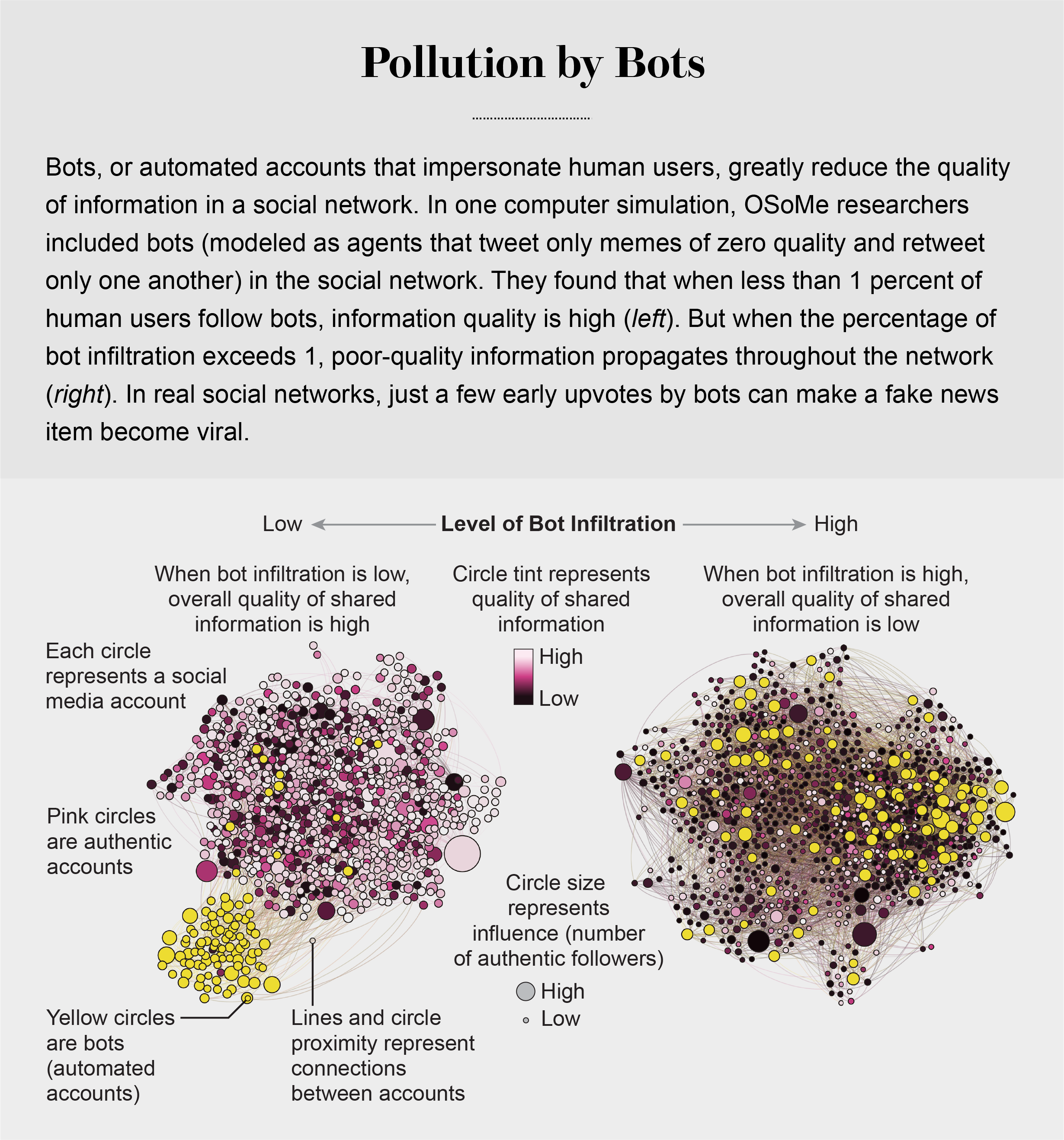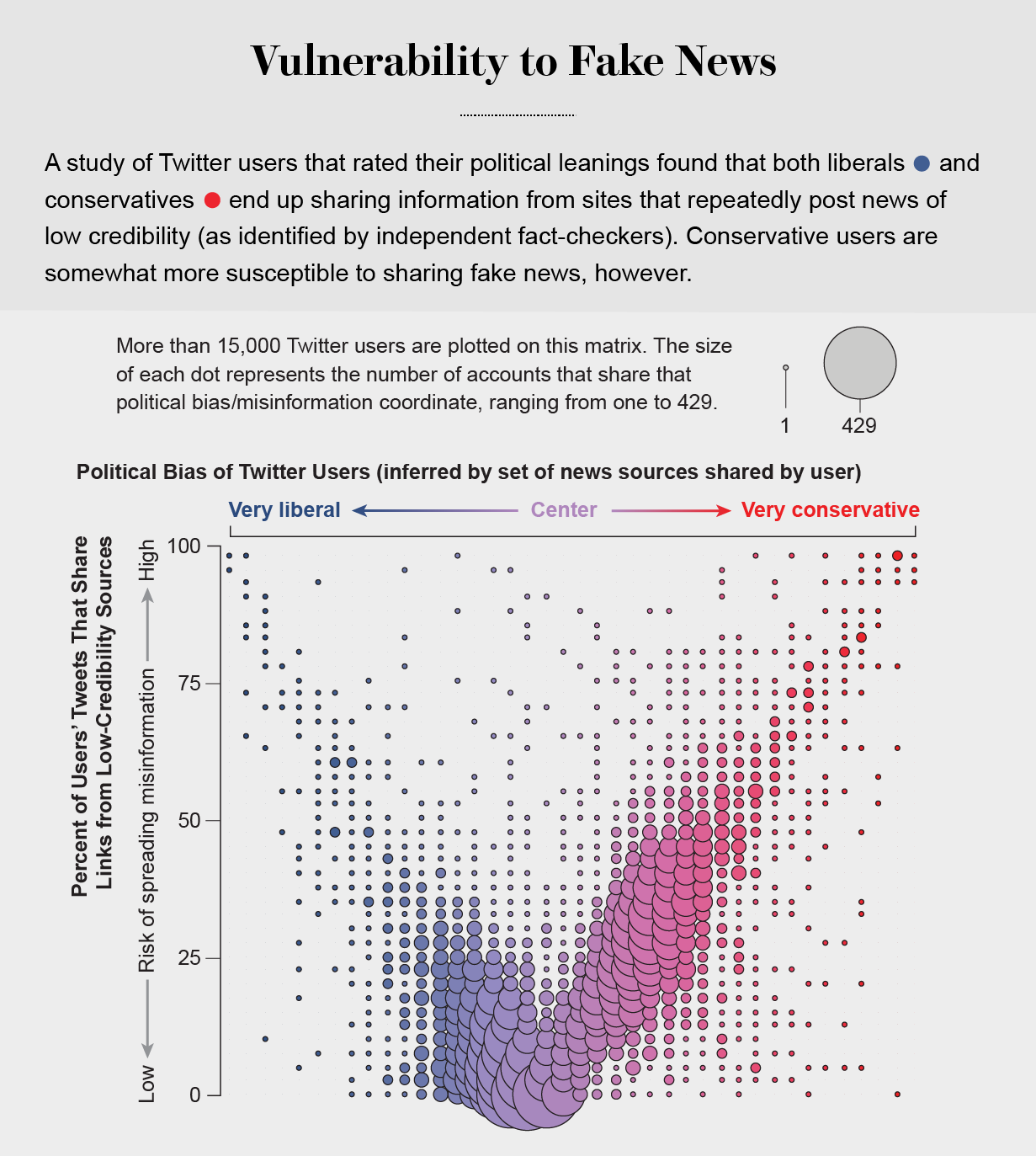https://www.edsurge.com/news/2022-05-05-are-we-doomed-to-a-culture-where-fake-news-wins-not-if-schools-can-help-it
this infographic from the European Association for Viewers Interests which took me on a tour of ten types of misleading news—propaganda, clickbait, sponsored content, satire and hoax, error, partisan, conspiracy theory, pseudoscience, misinformation and bogus information.
- recognize our own biases
- “nonsense detectors
- we examine and analyze the authority of the original source
- we should triangulate the information
Critical news literacy session for social policy analysis course
Katie Querna, Thursday, 11AM, Stewart Hall

https://www.theguardian.com/world/2022/feb/21/dumb-and-lazy-the-flawed-films-of-ukrainian-attacks-made-by-russias-fake-factory
https://english.elpais.com/science-tech/2022-02-24/the-war-in-ukraine-via-tiktok-how-ordinary-citizens-are-recording-russian-troops.html
+++ please cover this information at home and bring your ideas and questions to class +++++
Most students can’t tell fake news from real news, study shows
Read more: https://blog.stcloudstate.edu/ims/2017/03/28/fake-news-3/
Module 1 (video to introduce students to the readings and expected tasks)
- Fake News / Misinformation / Disinformation
- Definitions
- Fake news, alternative facts
https://blog.stcloudstate.edu/ims?s=fake+news
https://blog.stcloudstate.edu/ims?s=alternative+facts
- Misinformation vs disinformation
https://blog.stcloudstate.edu/ims/2018/02/18/fake-news-disinformation-propaganda/
- Propaganda
- Conspiracy theories
- Bots, trolls
https://blog.stcloudstate.edu/ims/2017/11/22/bots-trolls-and-fake-news/
https://blog.stcloudstate.edu/ims/2020/04/30/fake-social-media-accounts-and-politicians/
https://blog.stcloudstate.edu/ims/2020/01/20/bots-and-disinformation/
- Clickbait
Filter bubbles, echo chambers
(8 min) video explains filter bubbles
https://www.ted.com/talks/eli_pariser_beware_online_filter
+++++ thank you for covering this information at home. Pls don’t forget to bring your q/s and ideas to class +++++
Why we are here today?
We need to look deeper in the current 21stcentury state of information and disinformation and determine how such awareness can help policy analysis.
How do we make up our mind about news and information; where from we get our info; who do we believe, who do we mistrust.
What do you understand under the following three items and their place in our efforts to analyze policies?
“critical thinking,” https://blog.stcloudstate.edu/ims/2014/05/11/the-5-step-model-to-teach-students-critical-thinking-skills/
“media literacy,” “Media Literacy now considers digital citizenship as part of media literacy — not the other way around”
https://blog.stcloudstate.edu/ims/2020/01/07/k12-media-literacy/
“critical [news] literacy”
https://youtu.be/i2WyIkK9IOg
how do these three items assist a better analysis of policies?
Class assignment:
Share a topic which is very much to your heart.
Please feel welcome to use the following resources and/or contribute with your own resources to determine the sources and potential bias
library spot fake news
fake news resources
fake news and video
Feel free also to use the following guidelines when establishing the veracity of information:
Here is a short (4 min) video introducing you to the well-known basics for evaluation of academic literature:
https://youtu.be/qUd_gf2ypk4
- ACCURACY
- Does the author cite reliable sources?
- How does the information compare with that in other works on the topic?
- Can you determine if the information has gone through peer-review?
- Are there factual, spelling, typographical, or grammatical errors?
- AUDIENCE
- Who do you think the authors are trying to reach?
- Is the language, vocabulary, style and tone appropriate for intended audience?
- What are the audience demographics? (age, educational level, etc.)
- Are the authors targeting a particular group or segment of society?
- AUTHORITY
- Who wrote the information found in the article or on the site?
- What are the author’s credentials/qualifications for this particular topic?
- Is the author affiliated with a particular organization or institution?
- What does that affiliation suggest about the author?
- CURRENCY
- Is the content current?
- Does the date of the information directly affect the accuracy or usefulness of the information?
- OBJECTIVITY/BIAS
- What is the author’s or website’s point of view?
- Is the point of view subtle or explicit?
- Is the information presented as fact or opinion?
- If opinion, is the opinion supported by credible data or informed argument?
- Is the information one-sided?
- Are alternate views represented?
- Does the point of view affect how you view the information?
- PURPOSE
- What is the author’s purpose or objective, to explain, provide new information or news, entertain, persuade or sell?
- Does the purpose affect how you view the information presented?
In 2021, however, all suggestions above may not be sufficient to distinguish a reliable source of information, even if the article made it through the peer-reviewed process. In time, you should learn to evaluate the research methods of the authors and decide if they are reliable. Same applies for the research findings and conclusions.
++++++++++++++++++++
Aditional topics and ideas for exploring at home:
civil disobedience
https://blog.stcloudstate.edu/ims/2014/09/30/disruptive-technologies-from-swarming-to-mesh-networking/
https://blog.stcloudstate.edu/ims/2019/08/30/tik-tok-students-and-teachers/
https://news.softpedia.com/news/Venezuela-Blocks-Walkie-Talkie-App-Zello-Amid-Protests-428583.shtml
http://www.businessinsider.com/yo-updates-on-israel-missile-attacks-2014-7
https://blog.stcloudstate.edu/ims/2016/11/14/internet-freedom/
https://blog.stcloudstate.edu/ims/2016/08/31/police-to-block-social-media/
https://blog.stcloudstate.edu/ims/2016/04/04/technology-and-activism/
https://www.theguardian.com/australia-news/2021/feb/24/sky-news-australia-is-tapping-into-the-global-conspiracy-set-and-its-paying-off
Jones uses segments from Sky News Australia in his program, particularly those from Sky’s Outsiders program, as “evidence” from mainstream media organisations to support his conspiracy theories.
The bite-sized videos carry advertising – and Sky shares the revenue with platforms like YouTube.
Last November, tech journalist Cam Wilson revealed in Business Insider that Sky News Australia had successfully built a Fox News-like online operation in Australia that dwarfs its terrestrial audience numbers. On YouTube, their videos have been viewed more than 500m times, more than any other Australian media organisation.
Wilson also reported that Sky’s Facebook posts had more total interactions in October than the ABC News, SBS News, 7News Australia, 9 News and 10 News First pages, and more shares than all of them combined.
++++++++++++++
more on conspiracy theories in this IMS blog
https://blog.stcloudstate.edu/ims?s=conspiracy+theories
Information Overload Helps Fake News Spread, and Social Media Knows It
Understanding how algorithm manipulators exploit our cognitive vulnerabilities empowers us to fight back
https://www.scientificamerican.com/article/information-overload-helps-fake-news-spread-and-social-media-knows-it/
a minefield of cognitive biases.
People who behaved in accordance with them—for example, by staying away from the overgrown pond bank where someone said there was a viper—were more likely to survive than those who did not.
Compounding the problem is the proliferation of online information. Viewing and producing blogs, videos, tweets and other units of information called memes has become so cheap and easy that the information marketplace is inundated. My note: folksonomy in its worst.
At the University of Warwick in England and at Indiana University Bloomington’s Observatory on Social Media (OSoMe, pronounced “awesome”), our teams are using cognitive experiments, simulations, data mining and artificial intelligence to comprehend the cognitive vulnerabilities of social media users.
developing analytical and machine-learning aids to fight social media manipulation.
As Nobel Prize–winning economist and psychologist Herbert A. Simon noted, “What information consumes is rather obvious: it consumes the attention of its recipients.”
attention economy

Our models revealed that even when we want to see and share high-quality information, our inability to view everything in our news feeds inevitably leads us to share things that are partly or completely untrue.
Frederic Bartlett
Cognitive biases greatly worsen the problem.
We now know that our minds do this all the time: they adjust our understanding of new information so that it fits in with what we already know. One consequence of this so-called confirmation bias is that people often seek out, recall and understand information that best confirms what they already believe.
This tendency is extremely difficult to correct.
Making matters worse, search engines and social media platforms provide personalized recommendations based on the vast amounts of data they have about users’ past preferences.
pollution by bots

Social Herding
social groups create a pressure toward conformity so powerful that it can overcome individual preferences, and by amplifying random early differences, it can cause segregated groups to diverge to extremes.
Social media follows a similar dynamic. We confuse popularity with quality and end up copying the behavior we observe.
information is transmitted via “complex contagion”: when we are repeatedly exposed to an idea, typically from many sources, we are more likely to adopt and reshare it.

In addition to showing us items that conform with our views, social media platforms such as Facebook, Twitter, YouTube and Instagram place popular content at the top of our screens and show us how many people have liked and shared something. Few of us realize that these cues do not provide independent assessments of quality.
programmers who design the algorithms for ranking memes on social media assume that the “wisdom of crowds” will quickly identify high-quality items; they use popularity as a proxy for quality. My note: again, ill-conceived folksonomy.
Echo Chambers
the political echo chambers on Twitter are so extreme that individual users’ political leanings can be predicted with high accuracy: you have the same opinions as the majority of your connections. This chambered structure efficiently spreads information within a community while insulating that community from other groups.
socially shared information not only bolsters our biases but also becomes more resilient to correction.
machine-learning algorithms to detect social bots. One of these, Botometer, is a public tool that extracts 1,200 features from a given Twitter account to characterize its profile, friends, social network structure, temporal activity patterns, language and other features. The program compares these characteristics with those of tens of thousands of previously identified bots to give the Twitter account a score for its likely use of automation.
Some manipulators play both sides of a divide through separate fake news sites and bots, driving political polarization or monetization by ads.
recently uncovered a network of inauthentic accounts on Twitter that were all coordinated by the same entity. Some pretended to be pro-Trump supporters of the Make America Great Again campaign, whereas others posed as Trump “resisters”; all asked for political donations.
a mobile app called Fakey that helps users learn how to spot misinformation. The game simulates a social media news feed, showing actual articles from low- and high-credibility sources. Users must decide what they can or should not share and what to fact-check. Analysis of data from Fakey confirms the prevalence of online social herding: users are more likely to share low-credibility articles when they believe that many other people have shared them.
Hoaxy, shows how any extant meme spreads through Twitter. In this visualization, nodes represent actual Twitter accounts, and links depict how retweets, quotes, mentions and replies propagate the meme from account to account.
Free communication is not free. By decreasing the cost of information, we have decreased its value and invited its adulteration.



